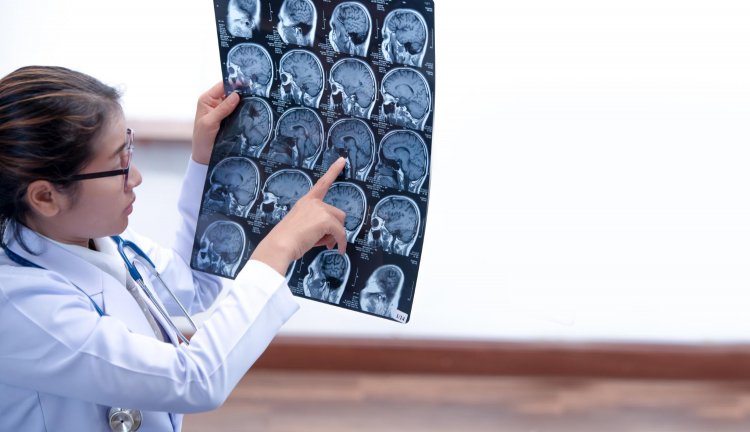Guarding Your Brain: Strategies for Stroke Awareness and Action
Stroke, a devastating neurological event, is a leading cause of mortality and long-term disability worldwide. It occurs when the blood supply to a part of the brain is either interrupted or significantly reduced, depriving brain tissue of oxygen and essential nutrients. In this comprehensive guide, we delve into the intricate details of strokes, covering their diverse types, underlying causes, identifiable symptoms, available treatment modalities, and effective prevention strategies.

Types of Stroke
-
Ischemic Stroke:
- Description: Ischemic strokes account for the majority of stroke cases, characterized by the blockage of an artery supplying blood to the brain.
- Subtypes: Thrombotic strokes, arising from a clot forming within an artery supplying blood to the brain, and embolic strokes, resulting from a clot originating elsewhere in the body and traveling to the brain.
- Risk Factors: Hypertension, dyslipidemia, diabetes mellitus, smoking, obesity, sedentary lifestyle, and certain genetic factors.
- Treatment: Administration of intravenous thrombolytics (such as alteplase) within a specific time window, mechanical thrombectomy for eligible patients, and secondary prevention measures to reduce the risk of recurrent strokes.
-
Hemorrhagic Stroke:
- Description: Hemorrhagic strokes occur due to the rupture of weakened blood vessels within the brain, leading to bleeding into the surrounding brain tissue.
- Subtypes: Intracerebral hemorrhage, involving bleeding directly into the brain tissue, and subarachnoid hemorrhage, characterized by bleeding into the space surrounding the brain.
- Risk Factors: Hypertension, cerebral amyloid angiopathy, arteriovenous malformations, aneurysms, and anticoagulant or antiplatelet medication use.
- Treatment: Rapid stabilization of vital signs, surgical interventions (such as craniotomy or endovascular coiling) to repair the bleeding vessels, and supportive care to minimize secondary brain injury.
-
Transient Ischemic Attack (TIA):
- Description: TIAs are transient episodes of neurological dysfunction caused by temporary ischemia in the brain, often serving as warning signs of an impending stroke.
- Clinical Features: Symptoms typically resolve within 24 hours, with no evidence of acute infarction on neuroimaging.
- Management: Urgent evaluation to identify and address modifiable risk factors, initiation of appropriate medical therapy, and implementation of lifestyle modifications to prevent future cerebrovascular events.
Causes of Stroke
Understanding the underlying etiology of strokes is essential for risk stratification and targeted interventions:
- Modifiable Risk Factors: Lifestyle-related factors such as hypertension, hyperlipidemia, diabetes mellitus, tobacco use, excessive alcohol consumption, physical inactivity, poor diet, and illicit drug abuse.
- Non-modifiable Risk Factors: Advanced age, male gender, race/ethnicity, genetic predisposition, and prior history of stroke or transient ischemic attack.
- Contributing Factors: Atrial fibrillation, other cardiac arrhythmias, valvular heart disease, carotid artery stenosis, chronic kidney disease, and inflammatory conditions.
Recognizing Symptoms
Early recognition of stroke symptoms is paramount for timely intervention and improved outcomes:
- FAST Approach:
- F: Facial Drooping: Sudden weakness or asymmetry of the face, particularly noticeable in the smile.
- A: Arm Weakness: Sudden onset of weakness or numbness in one or both arms.
- S: Speech Disturbance: Difficulty speaking, slurred speech, or inability to comprehend language.
- T: Time to Act: Time is of the essence; prompt activation of emergency medical services is crucial to minimize brain damage.
Treatment Options
Management strategies for stroke vary based on the type, severity, and underlying etiology:
- Ischemic Stroke: Administration of intravenous thrombolytics (alteplase) within 4.5 hours of symptom onset, consideration of mechanical thrombectomy for eligible patients within 24 hours, blood pressure management, antiplatelet or anticoagulant therapy, and secondary prevention measures.
- Hemorrhagic Stroke: Aggressive blood pressure control, reversal of anticoagulation if indicated, surgical or endovascular interventions for aneurysmal or arteriovenous malformation-related hemorrhages, seizure prophylaxis, and supportive care in the neurointensive care unit.
- Rehabilitation: Multidisciplinary rehabilitation programs encompassing physical therapy, occupational therapy, speech-language pathology, cognitive rehabilitation, and psychosocial support to optimize functional recovery and quality of life.
Prevention Strategies
Preventing strokes necessitates a multifaceted approach targeting modifiable risk factors and promoting healthy behaviors:
- Risk Factor Modification: Blood pressure control, lipid management, glycemic control, smoking cessation, weight management, and regular physical activity.
- Medication Adherence: Compliance with prescribed medications, including antihypertensive agents, statins, antiplatelet or anticoagulant therapy, and diabetic medications.
- Dietary Modifications: Adoption of a heart-healthy diet rich in fruits, vegetables, whole grains, lean proteins, and omega-3 fatty acids while minimizing sodium, saturated fats, and processed sugars.
- Lifestyle Interventions: Smoking cessation programs, stress reduction techniques, alcohol moderation, and engaging in regular exercise routines.
- Healthcare Surveillance: Routine medical check-ups, screening for cardiovascular risk factors, monitoring of medication side effects, and participation in stroke prevention clinics.
Stroke represents a significant public health challenge globally, necessitating concerted efforts across multiple domains to mitigate its impact. By enhancing public awareness, implementing evidence-based interventions, and fostering interdisciplinary collaboration, strides can be made towards reducing the incidence, morbidity, and mortality associated with strokes. Empowering individuals with knowledge about stroke prevention, recognition, and management is pivotal in achieving optimal outcomes and improving the overall well-being of affected individuals and communities.
#Stroke #IschemicStroke #HemorrhagicStroke #TIA #FASTApproach #StrokeTreatment #StrokePrevention #Healthcare #PublicHealth
Disclaimer:
The information provided in this article is for educational purposes only and should not be considered medical advice. If you have any health concerns or are experiencing symptoms, it is important to consult with a healthcare professional, such as a doctor or clinic, for proper diagnosis and treatment. Always seek the advice of your doctor or other qualified health provider with any questions you may have regarding a medical condition. Do not disregard professional medical advice or delay in seeking it because of something you have read in this article.
What's Your Reaction?





















